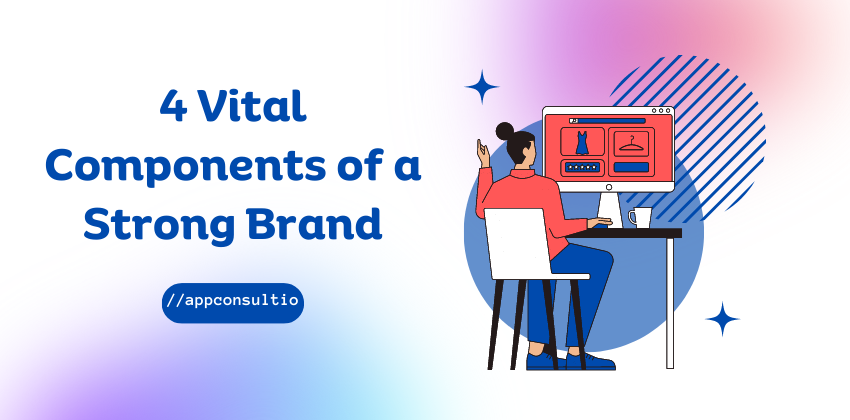
In our world today, being aware of brands matters a lot. Studies even show that India is one of the countries where brands matter. But a brand is way more than just a logo or a name. Let’s dive into what branding means and why it’s so important. Branding has been around for a very long time, helping to tell things apart from each other. Historically, European people put special marks on their items to show they made them like artists signing their paintings. Nowadays, brands do many essential things that make things better for you and help companies make more money.
Branding is like crafting a particular product, service, or company identity. It’s not just about having a cool name or logo – it’s about making something that catches people’s attention. This usually happens through ads that all look and feel similar. The main goal of branding is to stand out in the market and keep customers coming back. A brand is a unique label that differentiates a company or product from its competitors. Brands are used in business and advertising to help things be recognized.
When you trust a brand, you’ll likely buy from them again. This helps companies know they’ll have customers and makes it harder for other companies to enter the market. Sometimes, you pay more for a brand you like. This is like a secret weapon for companies to be better than others. Brands are like treasures that help companies do well and make more money, suitable for those who own part of the company.
1) Crafting your Brand identity - Think of your brand identity as how you want people to see your brand. Imagine if you’re unsure about your brand’s purpose – others won’t be either! It’s like introducing something without knowing what it’s all about. To help, here are some steps to shape your brand: First, find your mission. Why did you start your company? What’s its core? People like to know your mission, something bigger than just making money. This shows who you are.
Next, show what makes you special. Every brand needs a unique flavor. Please explain how your product or service helps customers and why it differs. Make sure all your ads say this. Also, how your brand looks is a big deal. Think about logos and colors – like Facebook’s blue or McDonald’s golden arches. A logo everyone knows is great, and colors affect how people feel. Keep things the same everywhere.
2) Nurturing your Brand image - Your brand image is like how people see your brand, unlike brand identity, which is how you want them to see it. Think of it as your brand’s reputation with the public. For instance, take United Airlines. They wanted to be seen as modern and thoughtful, but their reputation could have been better due to customer service problems. Use public relations to spread the news about your company. This can be through news, blogs, or trade publications. It helps people know more about your brand and improve how they see it.
Social media is fantastic for building your brand image. You can share things with customers, tell them about new stuff, and show what your brand is about. It’s also a good place to fix wrong things by talking to customers directly. Create good content that fits your brand. This can bring more people to your website and make your brand seem trustworthy.
3)Power of Brand Culture - Brand culture is like your company’s heart – it’s all about the beliefs you stand for and how you show them in action. In the past, businesses focused on fundamental values like ‘honesty’ and ‘reliability.’ Those are still important, but now, many companies stand on more significant things like morals and politics. These values shape your brand culture too. Look at Nike. They’ve stood for equality by supporting people like Colin Kaepernick and celebrating the women’s U.S. soccer team’s win. This shows in their brand culture.
When brand culture is strong, companies can focus on a clear purpose and use that as a guide for everything they do. It’s not just a face the company shows customers through marketing – it comes from inside the company and shines outward. Companies that have a healthy brand culture can smartly reach their business goals. Employees are motivated by the same passions, and customers feel connected because they like the culture the company shows through its actions.
4) Distinct Brand Personality - Your brand personality is like your company’s character – the human traits it has. It’s essential to connect with people emotionally and make your brand feel relatable. Understand who your audience is right from the start. This is crucial for building your brand identity too. But when it comes to personality, it’s extra important. How you talk and present yourself should match what your audience likes. For example, being formal might not work if your audience is younger. But if they’re older, using youthful slang might not connect. Your personality comes through better when you interact with people. That’s why social media matters so much. Everyone sees how you talk, which builds your character; Wendy’s is known for being playful and funny, especially with other brands on Twitter.
A brand goes beyond just a name or logo; it embodies a unique identity. Branding has a rich history, separating things and people from one another. Today, brands do much more – enhancing experiences and driving business success. Crafting a brand identity means defining your mission and uniqueness. It’s about standing out through consistent messages and visuals while nurturing your brand image to reflect a positive reputation. A strong brand culture, rooted in values and beliefs, guides your company’s actions and resonates with customers.